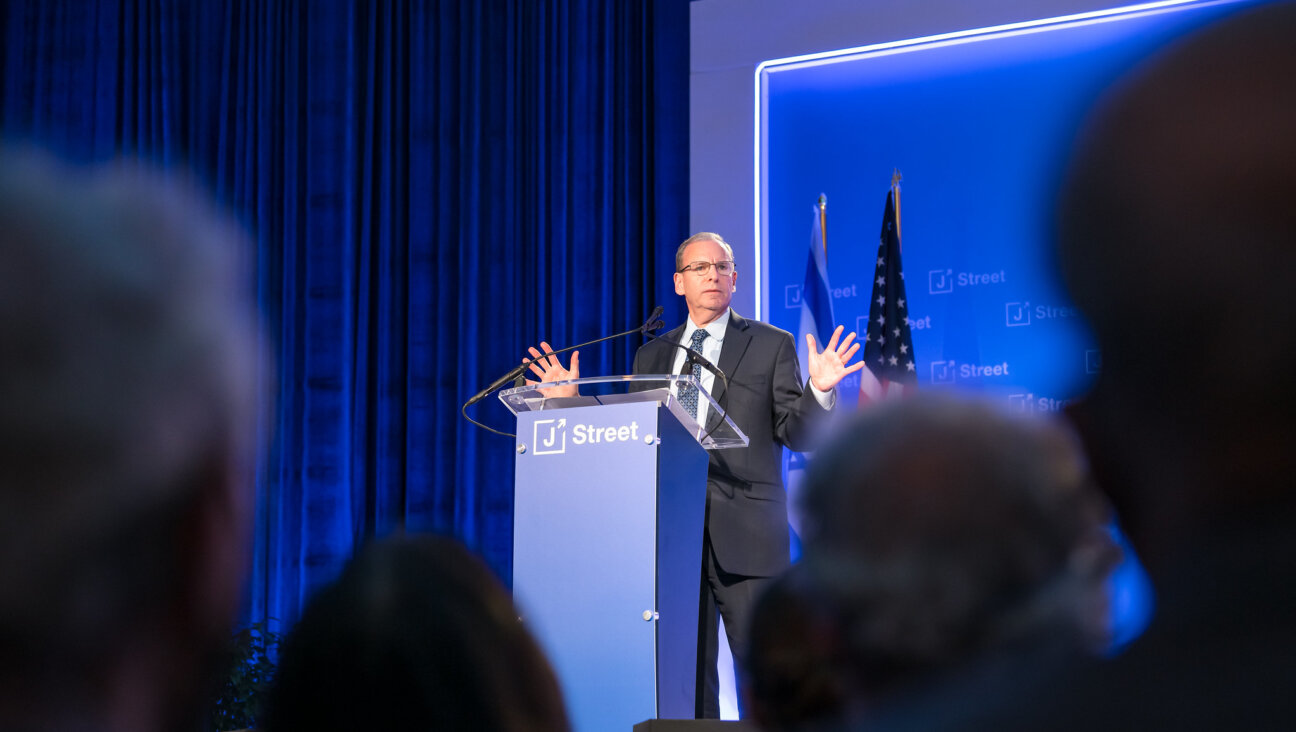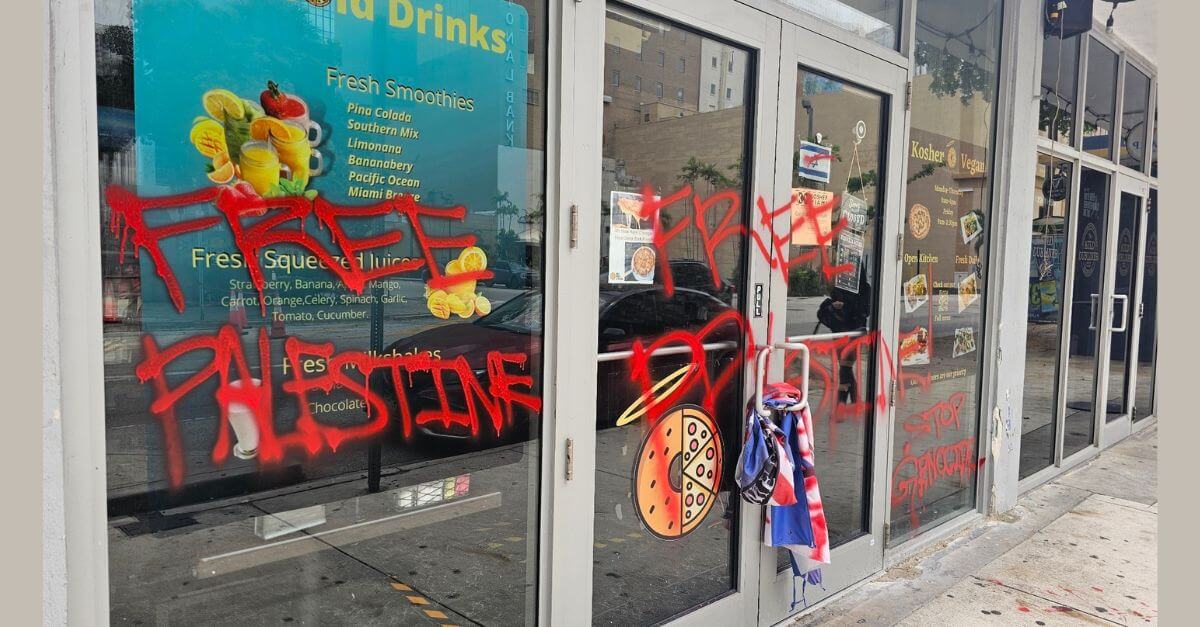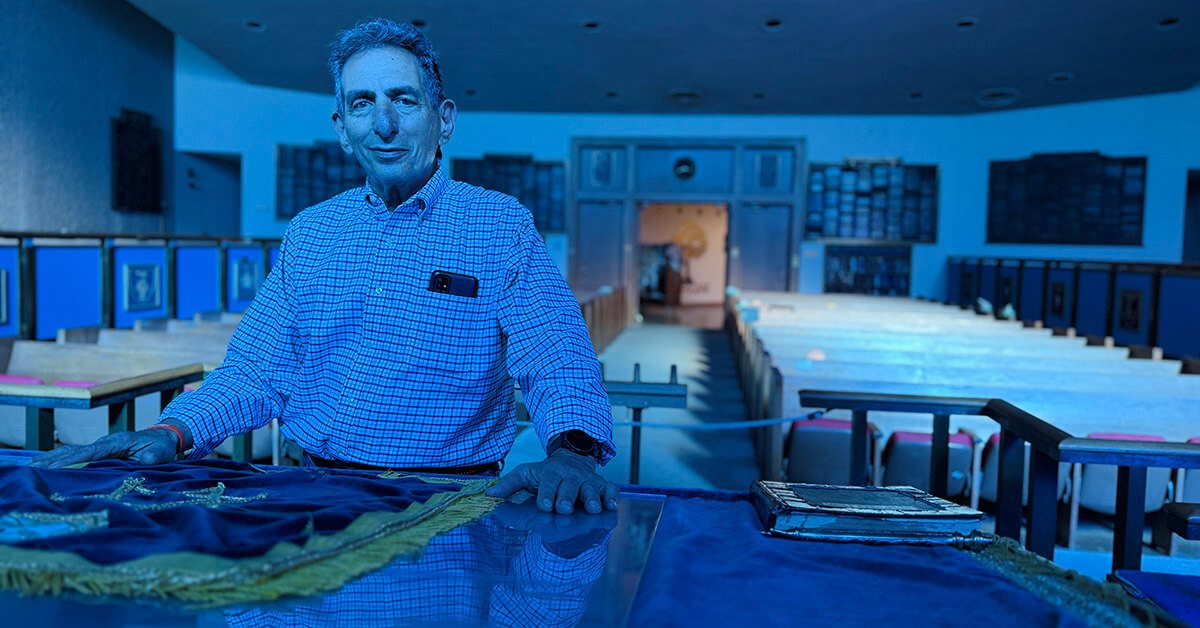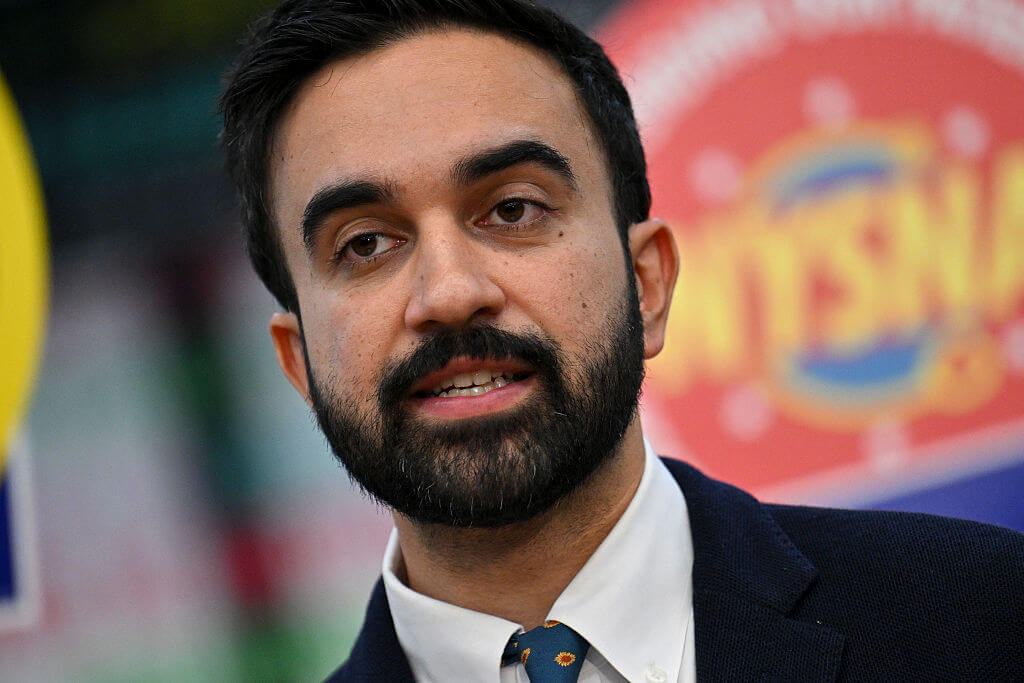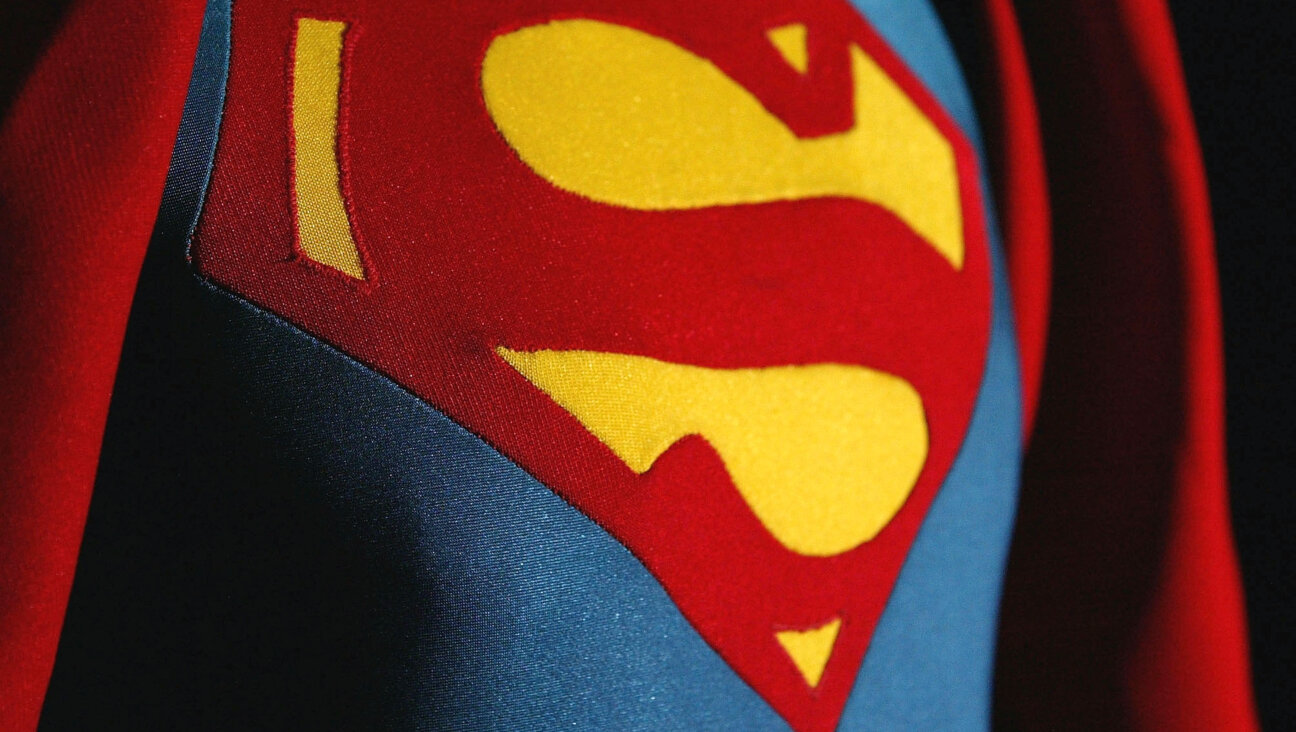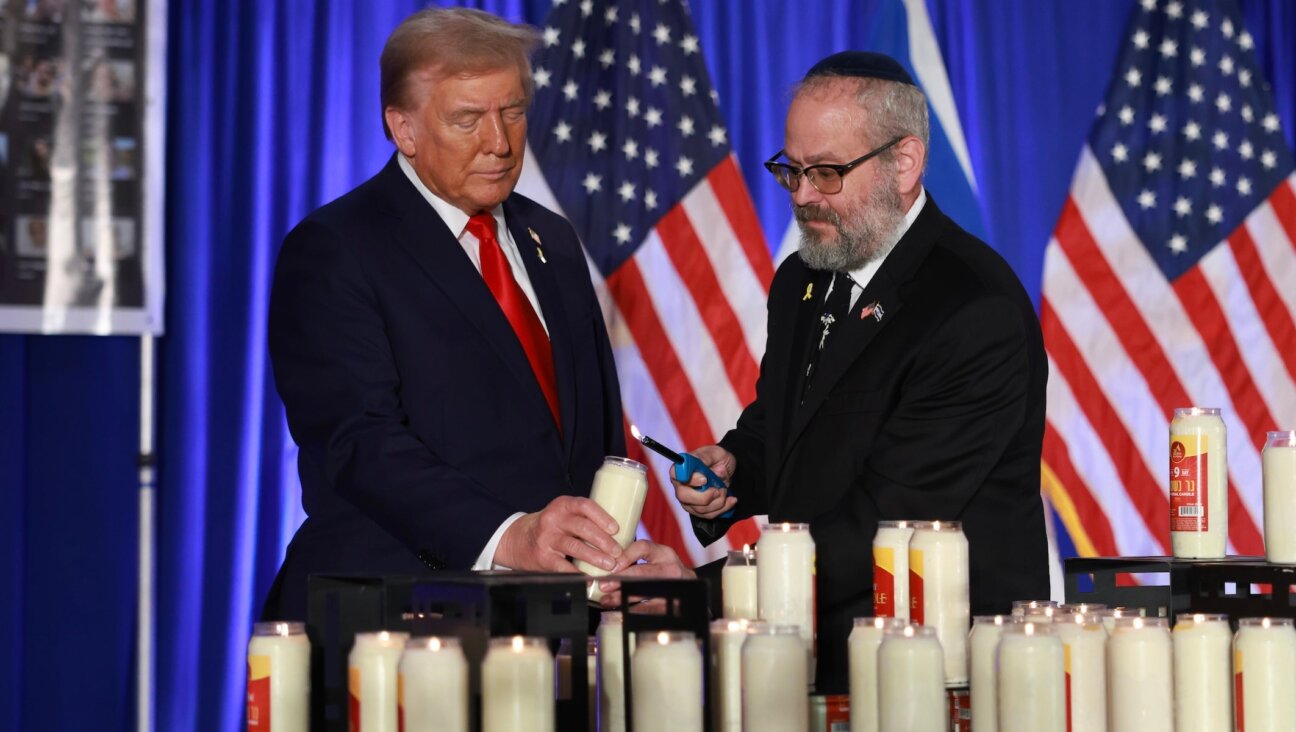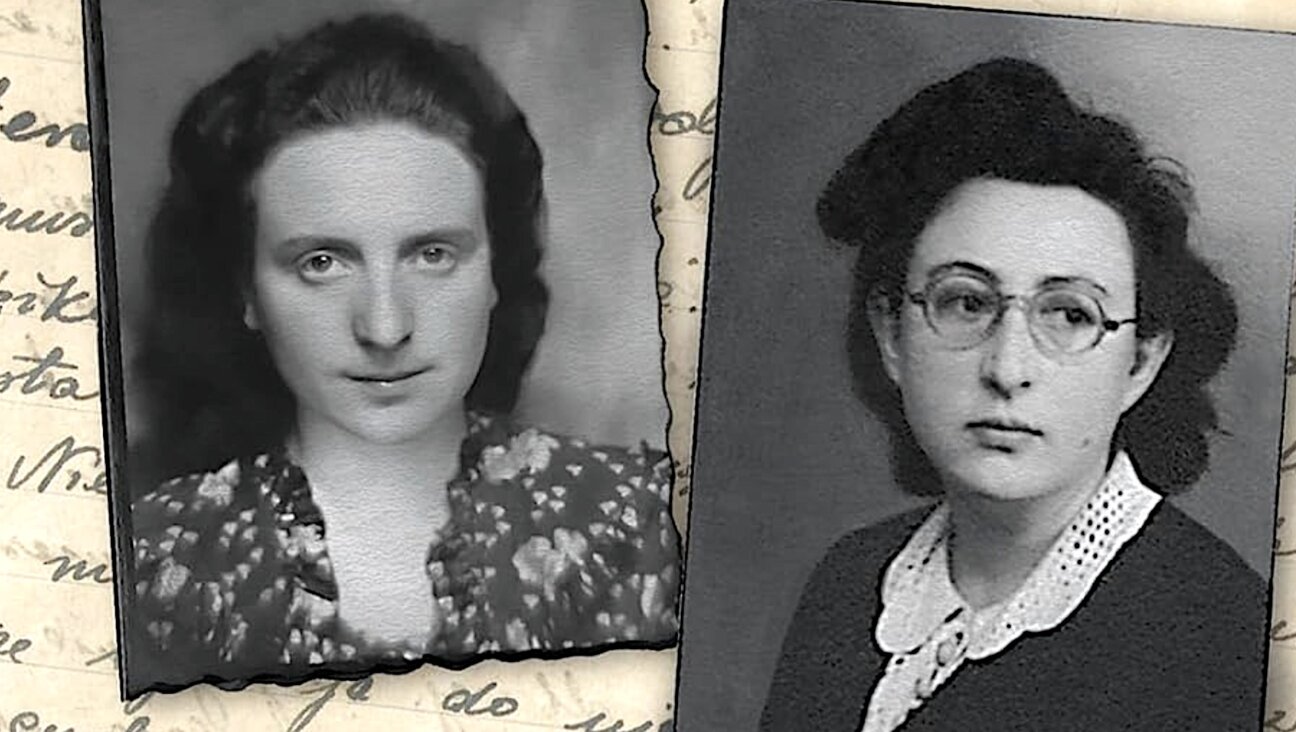Creating an Arab-Israeli Dialogue, One Note at a Time

Bridging Cultural Gaps: Israeli-Jewish cellist Udi Bar-David, left, and Arab-Israeli violinist Hanna Khoury rehearse ?Resonances.? Image by RENA POTOK
On a rain-drenched afternoon in Philadelphia, I entered a small underground room at the Kimmel Center for the Performing Arts to observe a rehearsal of “Resonances” — a new composition commissioned by Intercultural Journeys, an Arab/Jewish ensemble that utilizes the arts as a vehicle to produce dialogue between the Israeli and Arab peoples. In rehearsal were Syrian composer Kareem Roustom, Arab-Israeli violinist Hanna Khoury and Israeli-Jewish cellist Udi Bar-David.
The three have worked together in Intercultural Journeys, but this was the first time they were meeting to rehearse “Resonances.” They began with a difficult section, each offering corrections and ideas. During a brief pause, Bar-David said to Roustom, “It must be weird, as a composer, to hear other people playing music that’s only been in your head until now.”
“It is,” Roustom responded. “But you get used to it.”
The idea for Intercultural Journeys first came to Bar-David, who is a cellist with the Philadelphia Orchestra and the director of I.J., in the late 1990s. “I’ve always been interested in and attracted to musicians who represent other cultures,” he said. “I reached out to Diane Monroe, an African-American friend trained in classical jazz and violin. We created a program that interposed a Hasidic melody, to ‘Yedid Nefesh,’ next to a Negro spiritual, ‘Motherless Child.’ We realized immediately the strong bond between the two.”
Soon after, Bar-David initiated collaborations between Israeli and Arab musicians (including renowned ud player Simon Shaheen), and a pick-up ensemble evolved. In 1998, the group traveled to Neve Shalom/Wahat al-Salam, which is a village jointly established by Jewish and Palestinian Arab citizens of Israel, and to Plum Village, a Buddhist village and meditation center in Vietnam where Bar-David met with Thich Nhat Hanh, the Buddhist monk, poet, scholar and peace activist. “He was the one who really made me realize what interconnectedness is all about,” Bar-David told me. “He’s the one — I’ll never forget that. He made it very clear that we are all one.”
The partnerships with Arab and Israeli musicians expanded after these visits, but it was the events of 9/11 that formed the impetus to incorporate I.J. as a not-for profit organization, to translate the success of the cross-cultural artistic experience into actual dialogue and ultimately to move people to the negotiating table. “I don’t think it’s that complicated,” Bar-David said.
Efforts now focus on inspiring individuals and groups to partner with I.J. in creating dialogue groups and on encouraging Arab and Jewish students to partner on college campuses. “Up to now, we’ve succeeded in bringing people together in the U.S.,” Bar-David said. “The music made them feel… open to discussion.” Now, he wants to make more concentrated efforts in the Middle East: “That’s where the real test will be. Here, it’s theory; there, it’s practice.”
To advance this goal, Bar-David commissioned Roustom, an ud player and composer who writes film scores and symphonic orchestral music (he wrote the soundtrack to “Encounter Point,” Ronit Avni’s award-winning 2006 documentary film on Palestinian-Israeli peace organizations), to write a composition that would create a new fusion between Arabic and Israeli musical traditions.
“Resonances” claims to be the first composition of its kind, an attempt to demonstrate musically how actual discourse might take place. The piece has three sections: The beginning and middle are a conversation between the violin and cello, an attempt at reaching across difference. The third movement is called “Rahat al-Arwah” (“the repose of souls”) and is written in the key of B half-flat — a note that does not exist on a keyboard but can be played on a string instrument between a B flat and a B natural. It is in that musical middle ground that the cello and violin finally meet and resolve their conflict.
Much of Middle Eastern spiritual music is written in the key of B half-flat. “Regionally, in the Middle East, it’s a very special sound,” Roustom said. “It’s often found in music by Coptic Christians in Egypt, in Jewish music from Iraq and Aleppo, and in Morocco and parts of Turkey.” To capture the strong spiritual resonance of this musical genre, the composer asked Bar-David to retune the lowest string on his cello to a B flat (the string is usually tuned to a C natural).
After the rehearsal, I asked Roustom to demonstrate the B half-flat. He gestured to Khoury, who picked up his violin and played the opening of “Hatikvah” in B flat and then again in B natural. Then he ran it again, but this time he played a B half-flat, pausing briefly on the note for emphasis. It was dissonant, unexpected. It hovered in the space between major and minor tonality.
That is the essence of Intercultural Journeys: an Arab violinist playing the Israeli national anthem to illustrate the work of a Syrian composer.
Bar-David sees “Resonances” as a manifestation of Arab-Jewish partnership. “I don’t see it as Arabic or Israeli music, because it creates a new musical language,” he said. “It’s an analogy to my thinking that Arabs and Israelis have got to engage in a dialogue that’s devoid of historical perspective, since the same history can be written different ways by both people.… You can explore it in the arts, and eventually it should be explored at the negotiating table.”
“Resonances” premieres October 27, at 7:30 p.m. at the Connelly Center at Villanova University, as part of the 2009 Theology Institute Annual Conference. The program will also feature Puerto Rican drummer Rolando Morales-Matos and a Philadelphia Orchestra string quartet.
For additional performances, visit www.interculturaljourneys.org.
Rena Potok is a writer and editor living outside Philadelphia. She was recently appointed director of general education at the Schools of Graduate and Professional Studies at Rosemont College. Her first novel, “Swallows Garden,” was published by Bzztôh in the Netherlands in April.





